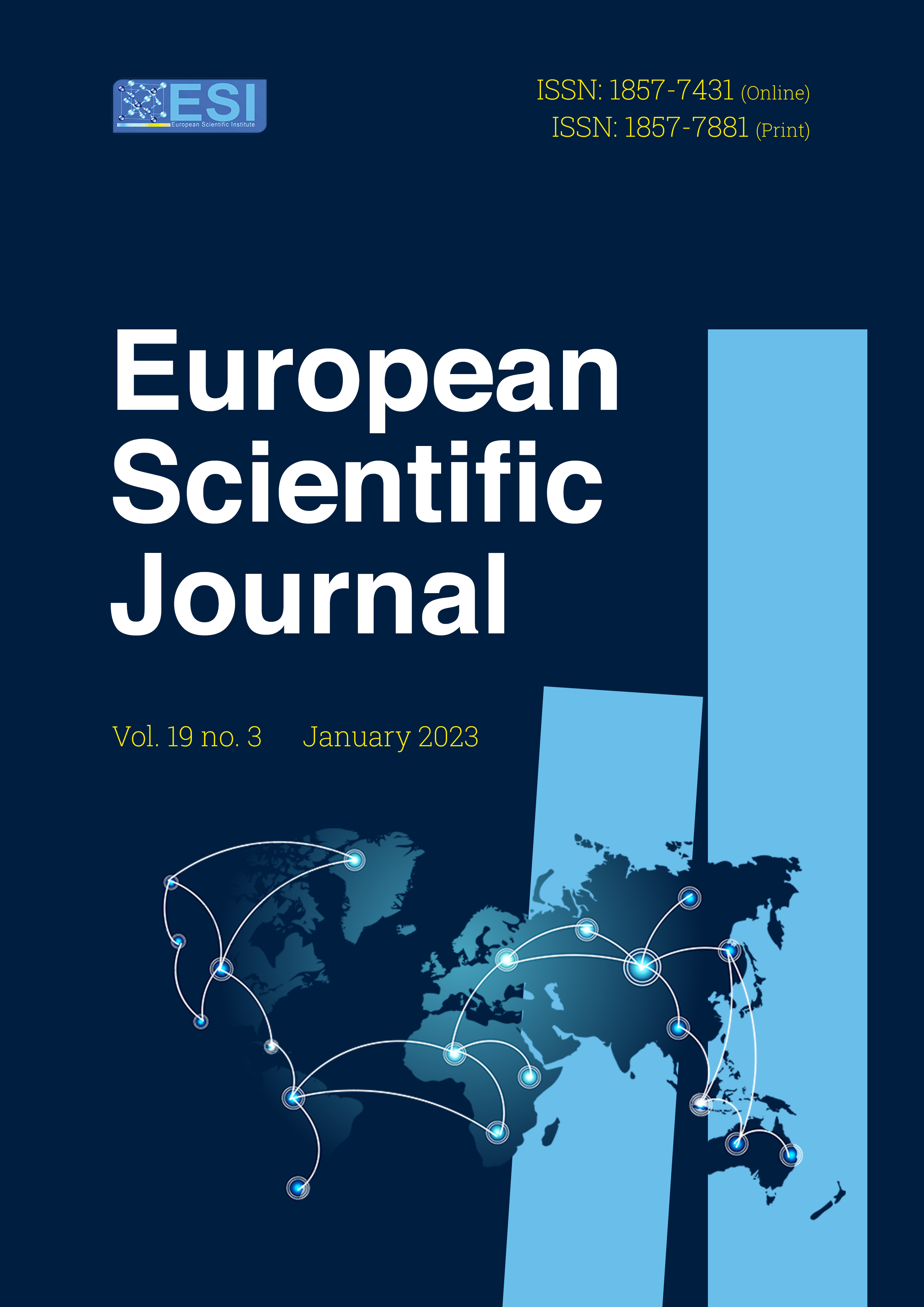Evaluation of the Antifungal Activity of Five Medicinal Plants on the In vitro Growth of a Multi-resistant Strain of Candida albicans
Abstract
This paper focuses on determining the antifungal potential of plants traditionally used to treat infections. Five (5) plants were collected. The anti-Candida albicans activity was evaluated by the double dilution method in tilted tubes with the aqueous and hydroethanolic extracts of the different plants. The results showed that 70% ethanolic extracts were more active than the aqueous extracts for all the plants. The 70% ethanolic extract of Terminalia ivorensis (MFC = 1.56 mg/mL) was the most active on the tested strain. This was followed by Terminalia Superba (MFC = 3.125 mg/mL), Distemonanthus benthamianus (MFC = 50 mg/mL), Gmelina arborea (MFC= 50 mg/mL), and Justicia secunda (MFC ˃ 50 mg/mL). The phytochemical screening revealed the presence of seven (7) major groups of compounds. Saponosides are present only in the aqueous extracts of plants. Polyphenols, Flavonoids, Polyterpenes, and Sterols as well as Tanins are present in both alcoholic and aqueous extracts. These compounds could justify its activity and its traditional use. The interesting results obtained with the hydroethanolic extract of Terminalia ivorensis incite further research with this extract. A bio-guided study on the fractions from this extract could lead to the discovery of one or more molecules of interest in the fight against pathogenic fungi.
Downloads
Metrics
PlumX Statistics
References
2. Adjanohoun, E. & Aké Assi. L. (1979). Contribution au recensement des plantes médicinales de Côte d’Ivoire. Ministère de la Recherche Scientifique, Centre National de Floristique (CNF). Abidjan, Côte d’Ivoire, 358 p.
3. Ascioglu, S., Rex, J.H., & De Pauw, B. (2002). Defining opportunistic invasive fungal infections in immunocompromised patients with cancer and hematopoietic stem cell transplants an international consensus. Clinical Infectious Diseases, 34: 7–14.
4. Bagre, I., Bahi, C., Ouattara, K., Guede, N. Z., Djaman, A. J., Coulibaly, A., & N’Guessan, J.D. (2011). "Étude botanique et exploration de l’activité antifongique de Morinda morindoides (Baker) Milne-Redh. sur la croissance in vitro de Cryptococcus neoformans. Phytothérapie, 9: 136-141.
5. Basli, A., Chibane, M., Madani, K., & Oukil, N. (2012). "Activité antibactérienne des polyphénols extraits d'une plante médicinale de la flore d'Algérie: Origanum glandulosum Desf." Phytothérapie, 10: 2-9.
6. Békro, Y.A., Békro, J.A.M., Boua, B.B., Tra, B.F.H., & Ehilé, E.E., (2007). Etude ethnobotanique et screening phytochimique de Caesalpinia benthamiana (Baill.) Herend.et Zarucchi (Caesalpiniaceae). National Science Review, 4 (2) : 217-225.
7. Develoux, M. & Bretagne, S. (2005). Candidoses et levuroses divers. EMC Maladies Infectieuses 2. 119–39.
8. Granier, F. (2003). Antifongiques, classes thérapeutiques, mécanisme d’action, problèmes de résistance. Antibiotiques, 5:39–48.
9. Kettani, A., Belkhadir, Z.H., & Mosadik, A. (2006). Traitement antifongique des candidoses systémiques en réanimation. Journal of Medical Mycology, 16 :16–25.
10. Kra, A.K.M., Ahon, G.M., Djo-Bi, D., Ouattara, S., Coulibaly, A., & Djaman, A.J. (2014). Antifungalactivities of medicinal plants extracts of Ivorian pharmacopoeia. Journal of Intercultural Ethnopharmacology, 3: 159-166.
11. Lin, S.J., Schranz, J., & Teutsch, S.M. (2001). Aspergillosis case-fatality rate: systematic review of the literature. Clinical Infectious Diseases, 32. 358–66.
12. Mandić, B.M., Gođevac, D.N., Beškoski, V.P., Simić, M.R., Trifunović, S.S., Tešević, V.V., Vajs, V.V., & Milosavljević, S.M. (2009). "Pyrrolizidine alkaloids from seven wild-growing Senecio species in Serbia and Montenegro. Journal of the Serbian Chemical Society, 74: 27-34.
13. Nivoix, Y., Dominique, L., Raoul, H., & Geneviève, U.S. (2018). Traitement des infections fongiques invasives et superficielles. Pharmacie clinique et thérapeutique. Elsevier Masson SAS. 893-920
14. Ouattara, S., Kporou, K.E., Kra, A.K.M., Zirihi, G.N., N’guessan, J.D., Coulibaly, A., & Djaman, A.J. (2013) Antifungal activities of Terminalia ivorensis A. Chev. bark extracts against Candida albicans and. Journal of Intercultural Ethnopharmacology, 2: 49-52.
15. Oussou, K.R., Kanko, C., Guessend, N., Yolou, S., Dosso, M., N'Guessan, Y.T., Figueredo, G., Chalchat, J.-C., & Koukoua, G. (2004). "Activités antibactériennes des huiles essentielles de trois plantes aromatiques de Côte-d'Ivoire. Comptes Rendus Chimie, 7: 1081-1086.
Copyright (c) 2023 Konan Gbê Kouakou N'dri Ange, Ouattara Sitapha, Kanga Yao, Monney Yapo Urbain, Kra Adou Koffi Mathieu

This work is licensed under a Creative Commons Attribution-NonCommercial-NoDerivatives 4.0 International License.








